
The Reykjavik Zoo was opened in 1990 with the goal of having a place where guests could learn more about Icelandic domestic animals. The Family Park opened a year later with rides and entertainment, and shortly thereafter, the two parks were combined into one.
You can visit the Reykjavik Family Park & Zoo during your stay in Reykjavik or as part of a self-drive tour of Iceland. You can also purchase a 24-hour Reykjavik City Card, which includes free entry to the Reykjavik Family Park & Zoo and several galleries and museums in Reykjavik.
Perché puoi contare sui nostri contenuti
Guide to Iceland è la piattaforma di viaggi più affidabile d’Islanda, che ogni anno aiuta milioni di viaggiatori. Tutti i nostri contenuti sono scritti e verificati da esperti locali con una conoscenza approfondita del Paese. Potete contare su di noi per consigli di viaggio accurati, aggiornati e affidabili.
Opening Hours at Reykjavik Family Park & Zoo
Reykjavík Park and Zoo is open every day, all year around.
In Winter, the park is open from 10-18, and in Summer from 10-18, except on Wednesdays when the park is open from 10-20
Some of the animal exhibits of the zoo and rides in the Family park open at different times over the course of the day. The opening times for various animal exhibits and devices can be found here.
Guests are not allowed to bring pets into the park. All traffic on bicycles, scooters, skates, skateboards, and other such vehicles is not permitted for visitors within the park
The Zoo
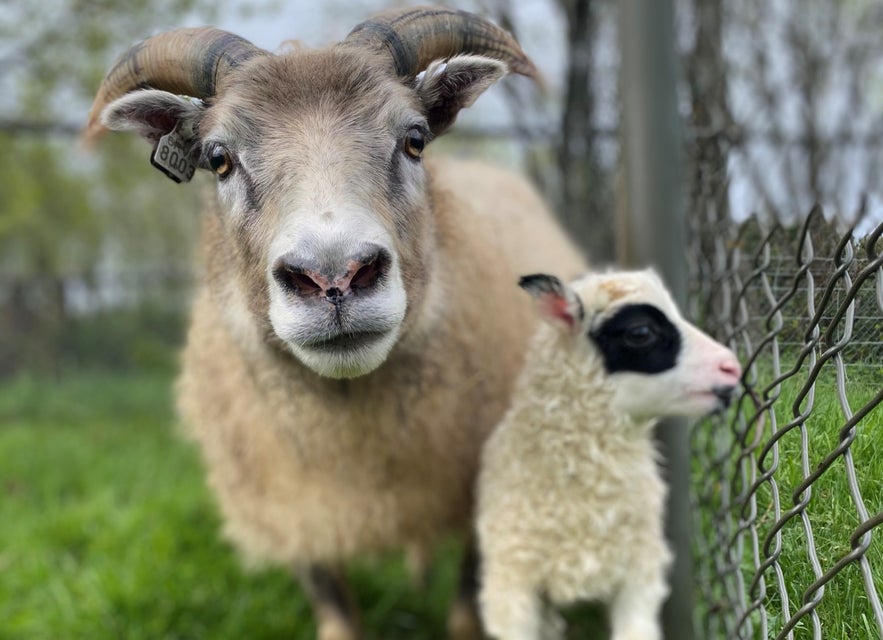 Today, the Reykjavik Zoo boasts a diverse collection of domestic animals as well as animals found in the Icelandic wilderness. The zoo regularly organizes informative exhibits, events, and interactive programs to engage visitors and promote environmental stewardship.
Today, the Reykjavik Zoo boasts a diverse collection of domestic animals as well as animals found in the Icelandic wilderness. The zoo regularly organizes informative exhibits, events, and interactive programs to engage visitors and promote environmental stewardship.
Here are some of the animals found within the Reykjavik Zoo:
The Icelandic Sheep
The Icelandic sheep is a breed of domestic sheep that was brought to Iceland by the Vikings over a thousand years ago. Known for their hardiness and adaptability to harsh climates, they have a compact and muscular build with short legs and a thick wooly coat.
Icelandic sheep are renowned for their dual-coated wool, which consists of a coarse outer layer called "tog" and a soft, insulating underlayer called "thel." The wool comes in a wide range of natural colors, including white, black, brown, gray, and various patterns. It is highly prized for its warmth, durability, and versatility.
Both rams and ewes of the Icelandic breed can have horns, although not all individuals develop them. The horns vary in size and shape, with some sheep having large, majestic spiraled horns while others may have smaller or even no horns at all.
Arctic Fox
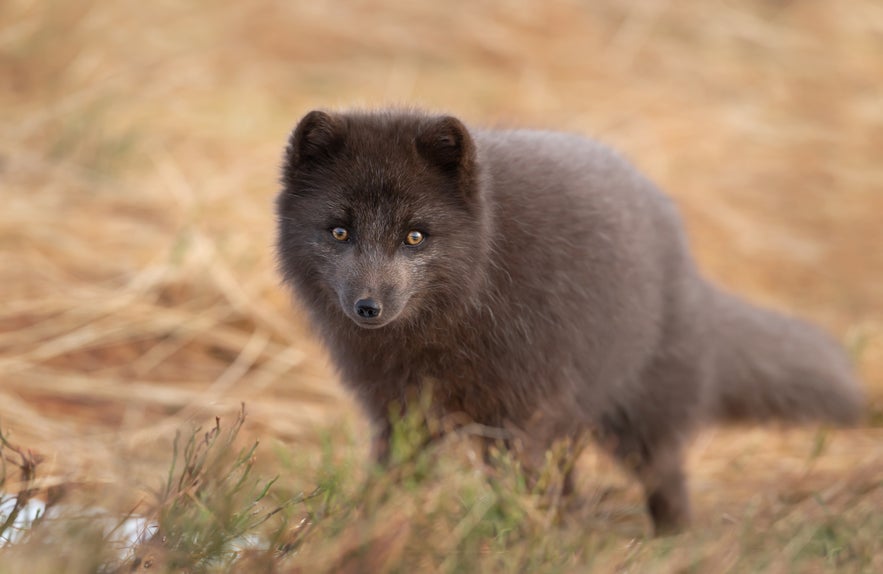 The arctic fox is the only native land mammal in Iceland, having lived in the country since before its settlement. It is an adaptable survivor that is known for its resilience in tough arctic conditions. In winter, its coat turns white to blend in with the snow, providing camouflage from predators and enabling efficient hunting. During the summer, the coat transforms into shades of brown or gray.
The arctic fox is the only native land mammal in Iceland, having lived in the country since before its settlement. It is an adaptable survivor that is known for its resilience in tough arctic conditions. In winter, its coat turns white to blend in with the snow, providing camouflage from predators and enabling efficient hunting. During the summer, the coat transforms into shades of brown or gray.
Arctic foxes are a popular attraction for wildlife enthusiasts and tourists visiting Iceland. While they are known to be shy and elusive, sightings are possible in certain areas, especially in the Westfjords and the Hornstrandir Nature Reserve. It is important to maintain a respectful distance and not disturb their natural behavior when encountering them in the wild.
The Icelandic Horse
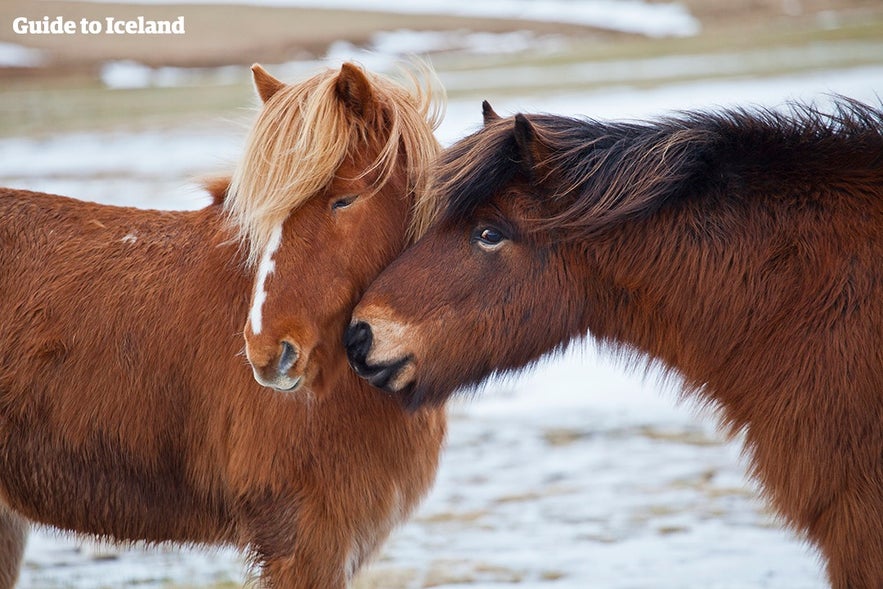 The Icelandic horse, sometimes mistaken for a pony, is a unique and distinct breed of horse known for its small and sturdy build. The Icelandic horse was brought to Iceland by Norse settlers in the 9th and 10th centuries, making it one of the oldest and purest horse breeds in the world.
The Icelandic horse, sometimes mistaken for a pony, is a unique and distinct breed of horse known for its small and sturdy build. The Icelandic horse was brought to Iceland by Norse settlers in the 9th and 10th centuries, making it one of the oldest and purest horse breeds in the world.
Importing horses to Iceland is prohibited to maintain the breed's purity, and once an Icelandic horse leaves the country, it cannot return. Icelandic horses are known for their friendly, curious, and calm nature. They are generally easy to handle and have a strong bond with their riders.
One of the most notable features of Icelandic horses is their ability to perform five natural gaits. In addition to the typical walk, trot, and canter/gallop, Icelandic horses are known for two unique gaits. If you're interested in getting to get first-hand experience, check out some of the great horseriding tours available.
Seal
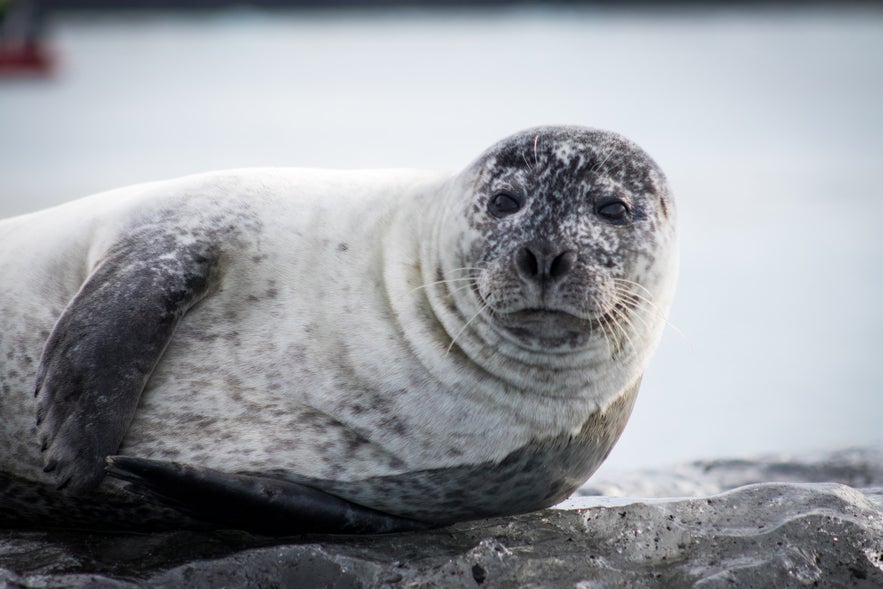 Seals can be found along Iceland's entire coastline. They are often observed on rocky shores, sandy beaches, and in coastal waters, including fjords and bays. They prefer areas with easy access to both land and water, where they can haul out and rest on land while also having ample food resources in the surrounding waters.
Seals can be found along Iceland's entire coastline. They are often observed on rocky shores, sandy beaches, and in coastal waters, including fjords and bays. They prefer areas with easy access to both land and water, where they can haul out and rest on land while also having ample food resources in the surrounding waters.
Seal watching has become a popular activity for tourists visiting Iceland, especially in the Snaefellsnes Peninsula. Tours provide opportunities to observe seals in their natural environment while minimizing disturbances to their habitats.
Reindeer
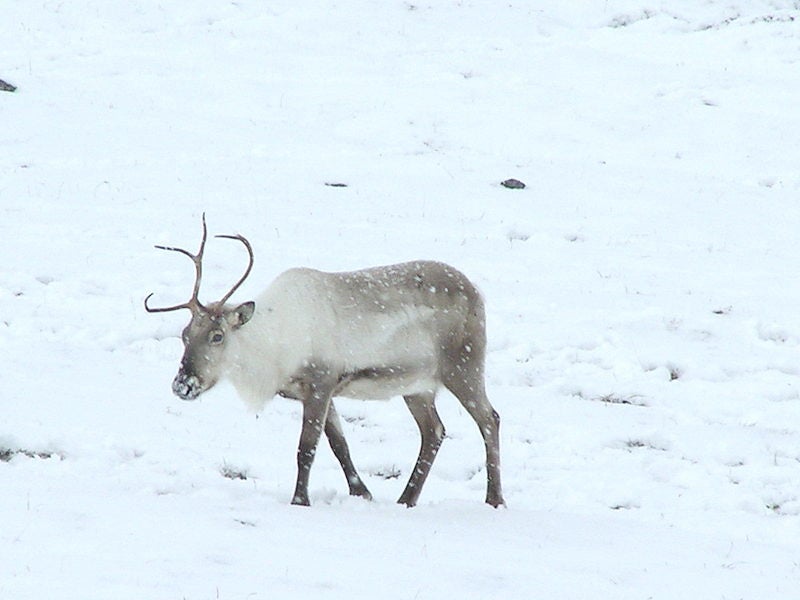
Photo from Wikimedia, Creative Commons, by Tristan Ferne.
Reindeer were introduced to Iceland in the late eighteenth century but now live wild in East Iceland. They stay within the highlands during the summer months and migrate closer to the coastal grasslands in the winter. A good way to see them when visiting Iceland is on a super jeep reindeer safari.
The reindeer lose their horns each year, the males when the mating season is over in the fall and the females after they give birth in the spring. New horns start to grow immediately after they lose the old ones.
Mink
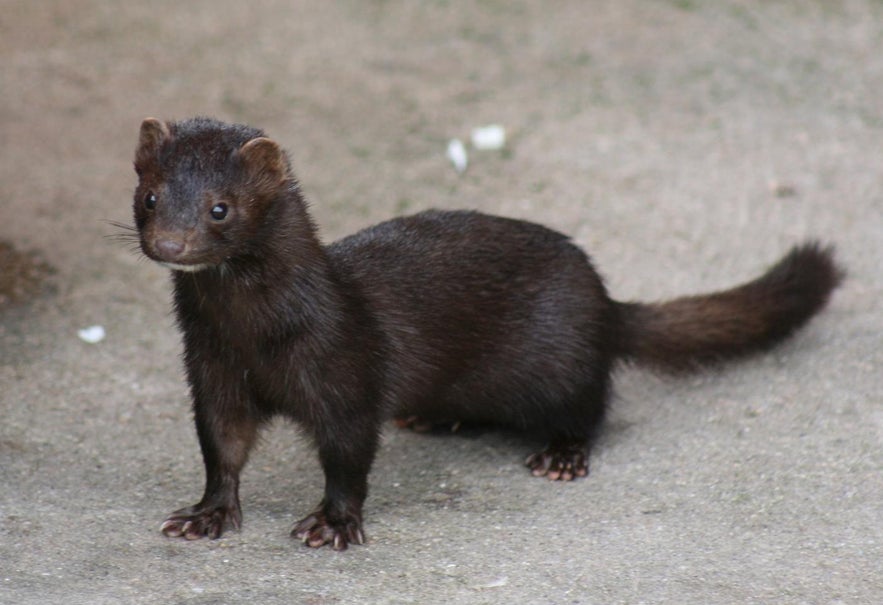
Photo from Wikimedia, Creative Commons, by Patrick Reijnders.
Minks are not native to Iceland and are considered an invasive species. They were introduced to the country in the 1930s for fur farming purposes but quickly escaped, spreading out and establishing populations in the wild.
Minks usually live near rivers or lakes and mainly eat fish in nature, although Icelandic farmers have had to take precautions to defend some of their smaller farm animals, such as chickens. They can stay underwater for 1 minute at a time. They are also loners by nature and only want the company of other minks during the mating season.
Domestic Cat
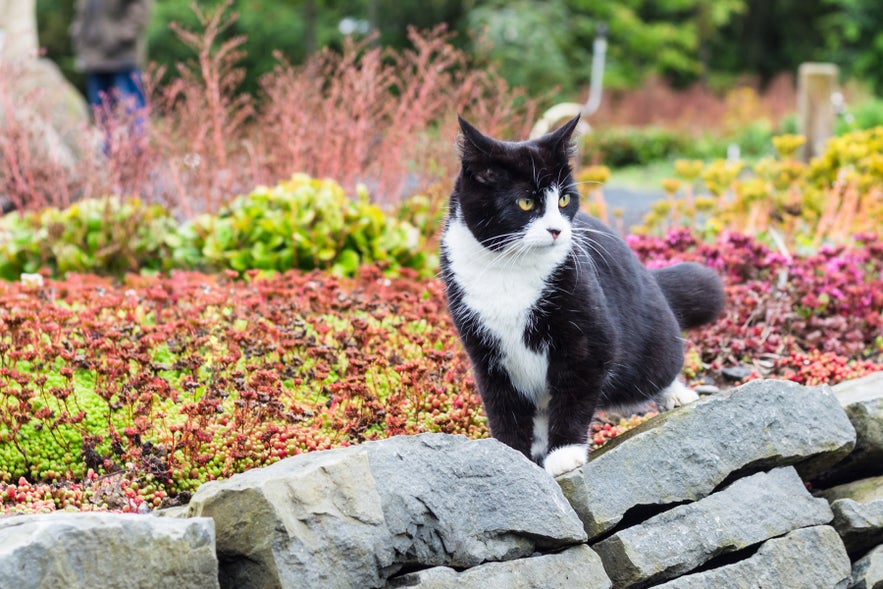
Cats have been a part of Icelandic culture for a long time and remain a popular pet in Icelandic households. When visiting Reykjavik, you are almost bound to numerous friendly cats roaming the streets.
While visiting the Reykjavik Zoo, you might spot cats that live in a building in the park roaming around. Keep your eyes peeled, as they do not adhere to any schedule the park tries to impose on them!
Various Others
Other types of animals found in Reykjavik Zoo include pigs, cows, guinea pigs, Icelandic hens, Icelandic goats, rabbits, and various birds. Also featured are some exotic animals not native to Iceland, such as bullfrogs, iguanas, and snakes.
The Family Park
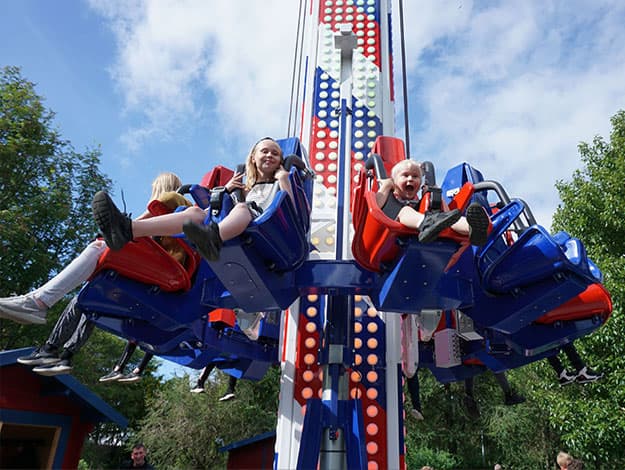 The Family Park is full of rides and other entertainment suitable for the family. It also includes a restaurant and a barbeque area that is open during the summertime. When visiting the rides of the park, pay attention to some of the names which are inspired by Norse mythology.
The Family Park is full of rides and other entertainment suitable for the family. It also includes a restaurant and a barbeque area that is open during the summertime. When visiting the rides of the park, pay attention to some of the names which are inspired by Norse mythology.
Drop Tower
One of the more popular rides is the drop tower. Standing roughly 70 feet tall (21 meters), the tower is named Ratatoskur, after a squirrel from Norse mythology. It is suitable for children, with the minimum height being 3.1 feet (97 cm) when accompanied by an adult.
Other attractions include boats, a junior driving school, a rocking ship, and a classic carousel.
Junior Driving School
One of the park's most beloved attractions is the driving school, which has been in the Family park since it opened. It is a collaboration with the Icelandic Transport Authority where get a short introduction to the laws of driving and can then put their skills to the test on the road.
The Train
A fun way to get around the park is on a novelty train. The park's train is called Tanngrisnir, a name drawn from an old Nordic manuscript written in Icelandic and most likely refers to the sound of thunder.
Various Other Activities
The Family Park is full of entertaining rides and curiosities that are constantly being updated. In addition to the rides already listed are boats, a carousel, a rocking ship, and more.
Things to Do Near Reykjavik Family Park & Zoo
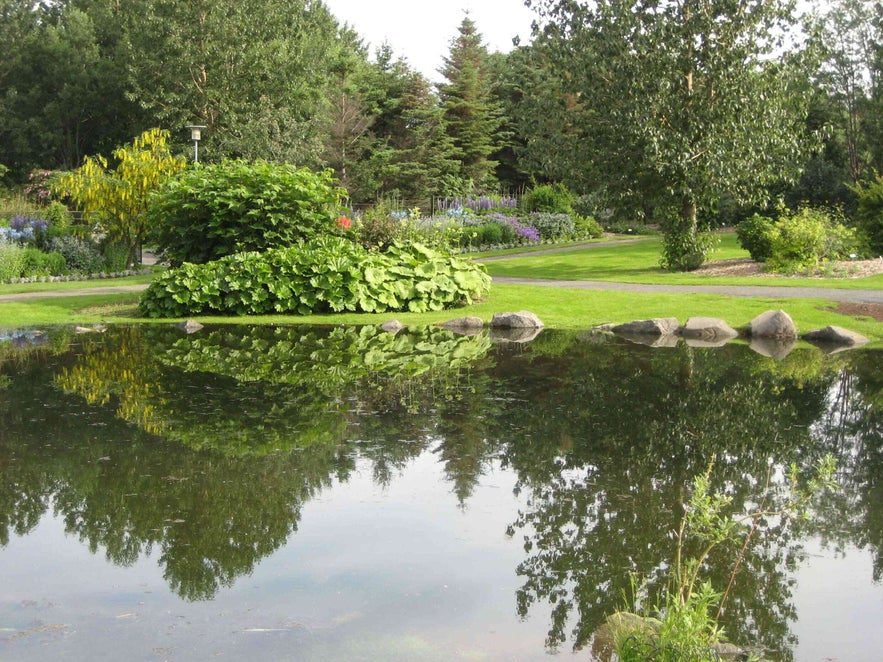
Photo from Wikimedia, Creative Commons, by David Stanley. No edits made.
The park is located in the Laugardalur area of Reykjavik, which is full of areas dedicated to recreational activities.
The Reykjavik Botanical Garden is located right next to the park, home to over 5,000 plant species. It is a beautiful area which is a popular spot among locals to go for a walk.
The largest swimming pool in Iceland, Laugardalslaug, is also located nearby. One of Reykjavik's most popular swimming pools, it is a great place to get to know Iceland's rich swimming pool culture.
Asmundarsafn Museum is an interesting museum dedicated to the works of Icelandic sculptor Asmundur Sveinsson. It has an indoor and outdoor area.
Kringlan Shopping Mall is Iceland's largest mall, with over 170 stores, a food court, and a cinema.
Tour popolari — zoo e sul parco di Reykjavik (Fjolskyldu- og Husdyragardurinn)
Tour grotta di ghiaccio di cristallo blu nel ghiacciaio Vatnajökull da laguna glaciale Jokulsarlon
Viaggio invernale di 2 giorni Costa sud, laguna glaciale Jokulsarlon e grotta ghiaccio di cristallo
Tour di 3 giorni per l'aurora boreale e la Grotta di ghiaccio verso Circolo d'Oro, Costa sud e laguna del ghiacciaio









